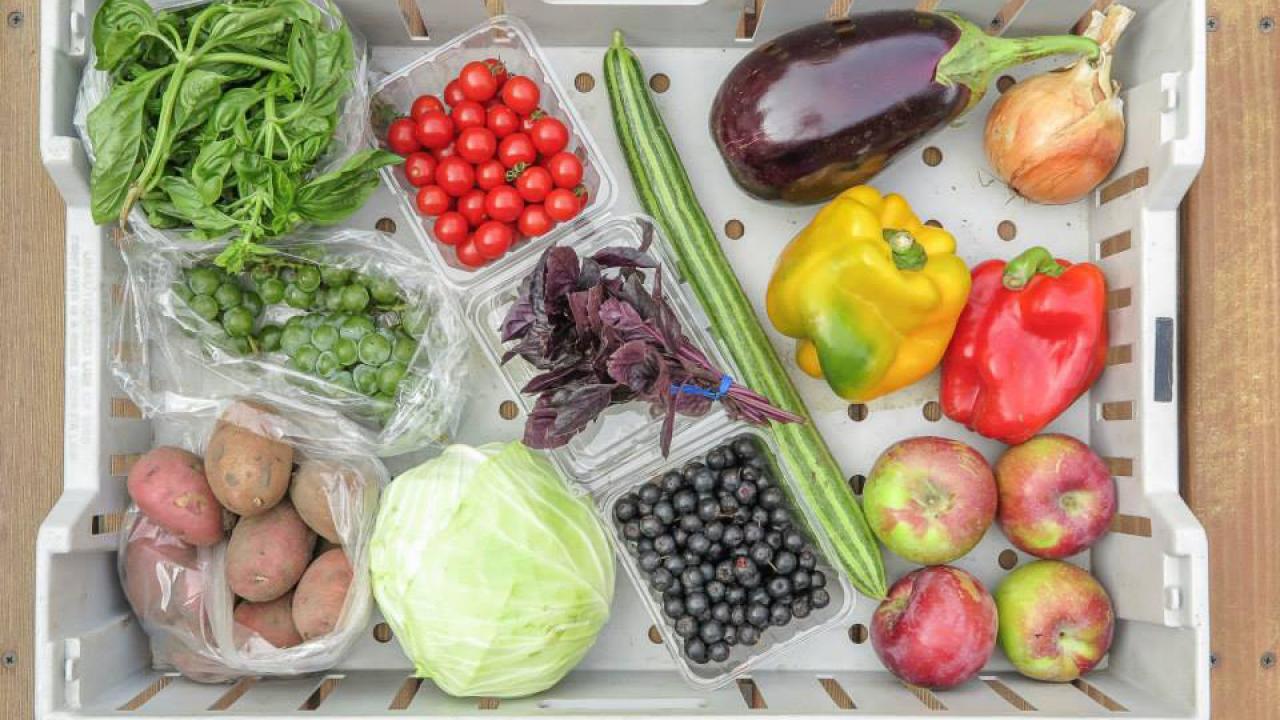This article was first posted as part of the Farm and Ranch Management Publication Series, at farm.unl.edu.
Listen: Nebraska FARMcast
As we enter spring, Nebraska’s Direct-to-Consumer (DTC) farms and ranches are in full swing – selling and delivering cuts of meat to customers, harvesting overwintered spinach and direct-seeding the year’s first crops of lettuce, radishes and carrots. Direct-to-Consumer (DTC) farms and ranches sell for-human consumption, agricultural products to consumers through farmers’ markets, u-pick, farm stores and stands and Community Supported Agriculture programs (CSA).
In 2015, about 114,800 farms, or 5.4% of U.S. farms marketed their products through direct-to- consumer channels (USDA NASS, 2015 Local Food Marketing Practices Survey). The farms participating in DTC marketing are, for the most part, small in terms of size and sales when compared to the agricultural industry on a whole. DTC marketing is appealing to small farms or ranches who are not large enough to produce the amount of product needed for other forms of distribution. By avoiding distributors, farmers retain more of dollars spent on their products. DTC marketing is challenging though, as transport, customer relations, and product marketing are all handled by the farmer. The hard-won relationships formed with consumers mean a lot in terms of retention rates and ultimately the survival of a small farm business.
Let’s explore one form of DTC sales that has been crucial both for farmers (as a stable source of income) and consumers (as a reliable source of food) during the pandemic – CSA. What does it stand for? Community Supported Agriculture. What is it? In 2021 terms, it can be characterized as the oldest form of a meal delivery service — decades before HelloFresh or Blue Apron came along, farmers have been providing customers weekly boxes of seasonal produce, farm products and recipes.
Think of a CSA as a farm subscription program. Traditionally, consumers purchase “shares” of the farm in the late winter and early spring, then their investment is returned to them throughout the season in the form of a weekly “share” of farm products – usually a box or bag packed with seasonal vegetables, fruits, herbs, eggs and value-added products.
This arrangement allows farms to secure cash in the traditionally lean times of late winter and early spring and means more overall stability in their business plan. CSA retention rates are generally quite high, meaning people tend to support the farm year after year. As restaurant sales vanished during the pandemic, and farmers’ market sales decreased following the overall trend of lower attendance, CSAs attracted more interest from consumers interested in safely sourced reliable food. In 2020 many CSAs adapted by offering contact-free pickup, or home delivery, as well as online ordering.
The model for CSA was popularized by agriculturist Dr. Booker T. Whatley, who championed farm subscriptions and U-Pick operations as a way for small-scale producers to remain in business without adhering to the get-big or get-out ethos of industrial-scale agriculture.
While locally grown food has become more common in grocery stores and restaurants, those retail venues do not offer direct connection to the farmer. CSA programs remain unique in that they form a bridge between consumer and farmer, a relationship that re-establishes consumer connection to a farm and farmer that most Americans no longer have.
In these face-to-face relationships, community is formed. Many CSA farms host events like farm tours, harvest celebrations or workdays. Farmers are available to answer questions and share their experience of growing food, cooking with local ingredients and storing their products. They have adapted to the pandemic by offering virtual community – updates via social media, online cooking demonstrations and virtual farm tours.
About 20 Buy Fresh Buy Local Nebraska Members have a CSA or subscription program. These programs range from the traditional single-farm seasonal produce CSA to a cut flower subscription, and multi-farm, full-diet, year-round CSA program. Some offer fully customizable shares, online ordering, and home delivery. Others specialize in meat products that are ordered and delivered frozen, by the bundle.
Most of us have been doing a lot more cooking at home in 2020, and it looks like this trend will continue into 2021. This growing season try ditching the national meal delivery services and sign up for a local CSA program!
Learn more about CSA programs in Nebraska, and find one near you by going here: http://www.buylocalnebraska.org/methods-sale/csa
